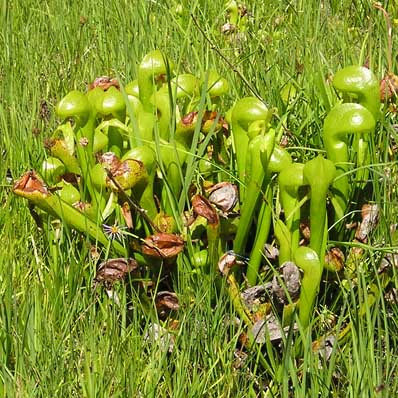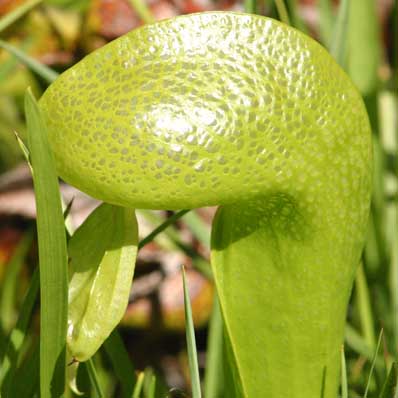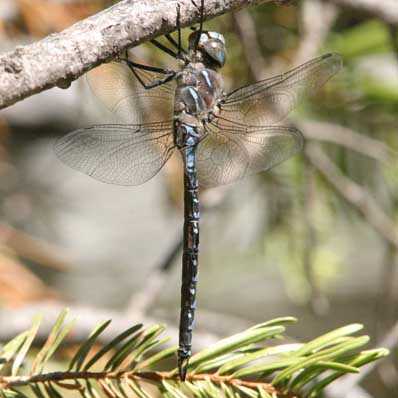
From the perspective of odites, this lovely gem is a fine spot to search of Emeralds, and can also be good for spreadwings and Black Petaltail. Rita and I spent a couple pleasant hours (8:30-10:30) one Sunday morning (22 July 2007). Despite fine sunshine early, odes did not start flying until about 9:30 a.m. We missed petaltail here but did find perched examples of both Ringed Emerald (below left) and American Emerald (below right). |
||
|
||
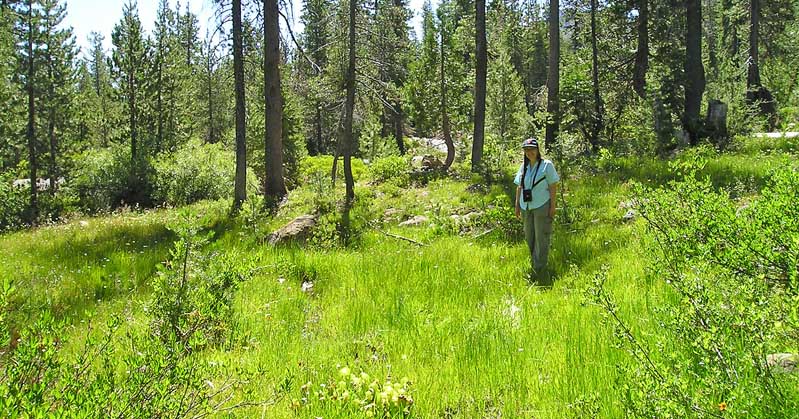 |
||
Darlingtonia californica, also called the California Pitcher plant, Cobra Lily, or Cobra Plant (below, left & right), is a carnivorous plant, the sole member of the genus in the family Sarraceniaceae. It is endemic to Northern California and Oregon, growing in bogs and seeps with running water. IUCN has designated this plant as uncommon due to its rarity in the field. It is just soooo impressive to see in growing in profusion. |
||
|
||
Most dramatic during our visit was an observation of an ovipositing female Pacific Spiketail (right). Please click here for a separate page with more photos and the story of this encounter. Other memorable moments included finding perched Variable Darner: both a male (below left) and a female (below right). Both spent time foraging over the glades and then perching often. |
||
|
||
|
| TOP |
all
photos © 2007 Don Roberson, except as otherwise stated |
 Gumboot Lake
(above & right) is a beautiful montane lake at ~6050' elevation in
the extreme southeast corner of Siskiyou County. It is reached by a
narrow but paved road west (Road 26) from Mt. Shasta City. The divide
that separates Siskiyou County from Trinity County is just beyond the
lake. There is a small campground with pit toilets that is popular with
fisherman and campers on summer weekends.
Gumboot Lake
(above & right) is a beautiful montane lake at ~6050' elevation in
the extreme southeast corner of Siskiyou County. It is reached by a
narrow but paved road west (Road 26) from Mt. Shasta City. The divide
that separates Siskiyou County from Trinity County is just beyond the
lake. There is a small campground with pit toilets that is popular with
fisherman and campers on summer weekends.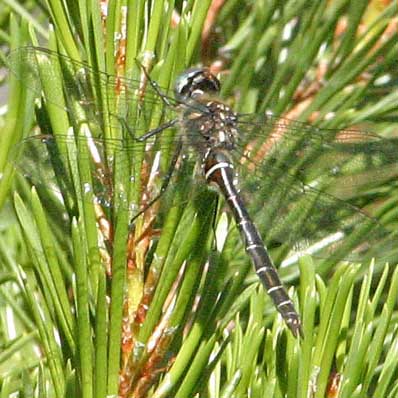
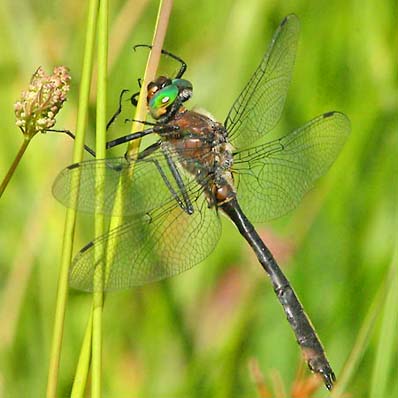
 A gorgeous spot nearby is along Gumboot Creek,
the outflow of Gumboot Lake, as it crosses Road 26 (above & right).
There is a sylvan glade set among the conifers; there is a
crystal-clear gurgling creek; and there are numerous seeps and rivulets
that support a huge assemblage of the endemic pitcher-plant Darlingtonia californica.
Colorful butterflies flit about; the woods have birds and chipmunks;
the creek has native frogs; and there are dragonflies. It is a
naturalist's haven.
A gorgeous spot nearby is along Gumboot Creek,
the outflow of Gumboot Lake, as it crosses Road 26 (above & right).
There is a sylvan glade set among the conifers; there is a
crystal-clear gurgling creek; and there are numerous seeps and rivulets
that support a huge assemblage of the endemic pitcher-plant Darlingtonia californica.
Colorful butterflies flit about; the woods have birds and chipmunks;
the creek has native frogs; and there are dragonflies. It is a
naturalist's haven. 